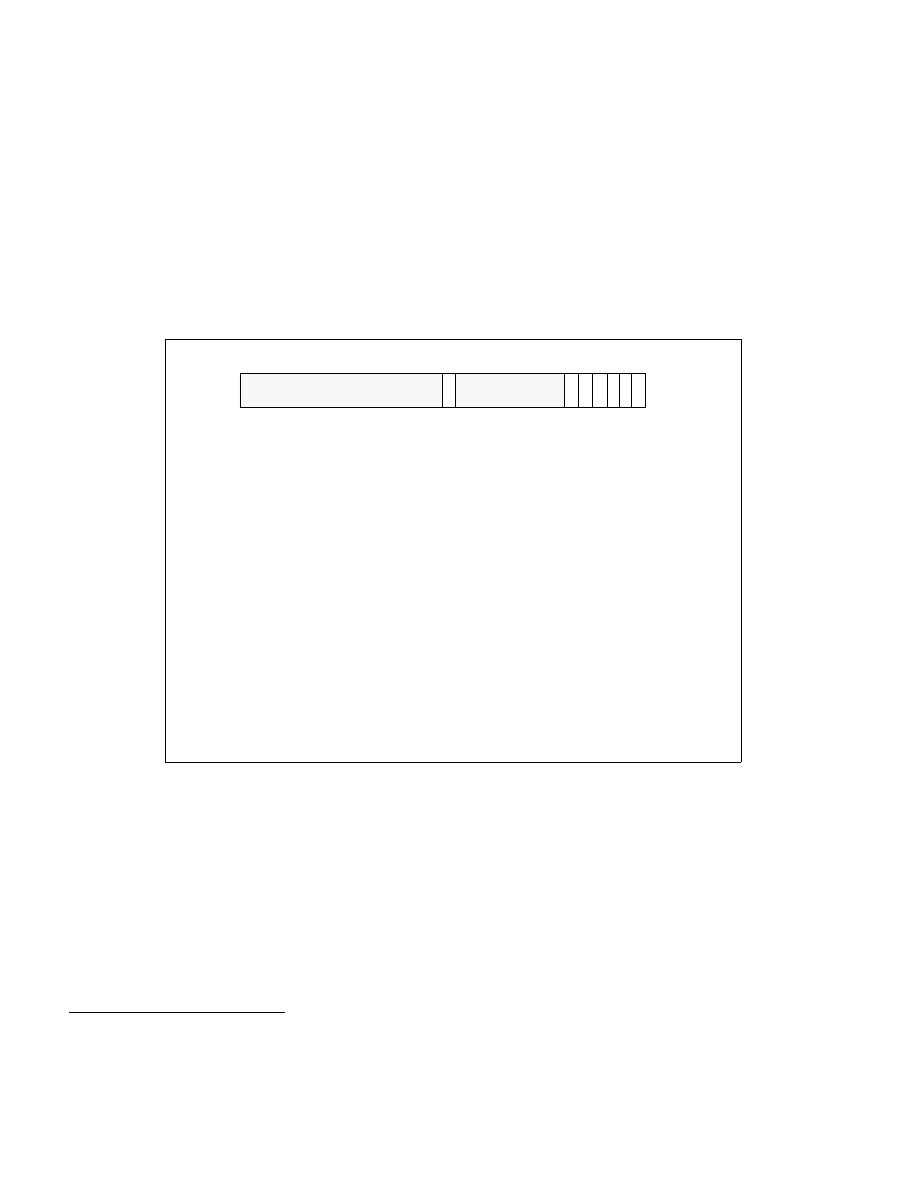
Vol. 3A 6-41
INTERRUPT AND EXCEPTION HANDLING
— I/D flag (bit 4).
This flag is 1 if the access causing the page-fault exception was an instruction fetch. This flag describes the
access causing the page-fault exception, not the access rights specified by paging.
— PK flag (bit 5).
This flag is 1 if the access causing the page-fault exception was a data access to a user-mode address with
protection key disallowed by the value of the PKRU register.
— SGX flag (bit 15).
This flag is 1 if the exception is unrelated to paging and resulted from violation of SGX-specific access-
control requirements. Because such a violation can occur only if there is no ordinary page fault, this flag is
set only if the P flag (bit 0) is 1 and the RSVD flag (bit 3) and the PK flag (bit 5) are both 0.
See Section 4.6, “Access Rights” and Section 4.7, “Page-Fault Exceptions” for more information about page-
fault exceptions and the error codes that they produce.
•
The contents of the CR2 register. The processor loads the CR2 register with the 32-bit linear address that
generated the exception. The page-fault handler can use this address to locate the corresponding page
directory and page-table entries. Another page fault can potentially occur during execution of the page-fault
handler; the handler should save the contents of the CR2 register before a second page fault can occur.
1
If a
page fault is caused by a page-level protection violation, the access flag in the page-directory entry is set when
the fault occurs. The behavior of IA-32 processors regarding the access flag in the corresponding page-table
entry is model specific and not architecturally defined.
Figure 6-9. Page-Fault Error Code
1. Processors update CR2 whenever a page fault is detected. If a second page fault occurs while an earlier page fault is being deliv-
ered, the faulting linear address of the second fault will overwrite the contents of CR2 (replacing the previous address). These
updates to CR2 occur even if the page fault results in a double fault or occurs during the delivery of a double fault.
The fault was caused by a non-present page.
The fault was caused by a page-level protection violation.
The access causing the fault was a read.
The access causing the fault was a write.
A supervisor-mode access caused the fault.
A user-mode access caused the fault.
31
0
Reserved
1
2
3
4
The fault was not caused by reserved bit violation.
The fault was caused by a reserved bit set to 1 in some
P
0
1
W/R
0
1
U/S
0
RSVD
0
1
1
I/D
I/D
0 The fault was not caused by an instruction fetch.
1 The fault was caused by an instruction fetch.
P
W/R
U/S
RSVD
paging-structure entry.
PK 5
PK
0 The fault was not caused by protection keys.
1 There was a protection-key violation.
SGX
The fault is not related to SGX.
0
1 The fault resulted from violation of SGX-specific access-control
requirements.
Reserved
SG
X
15